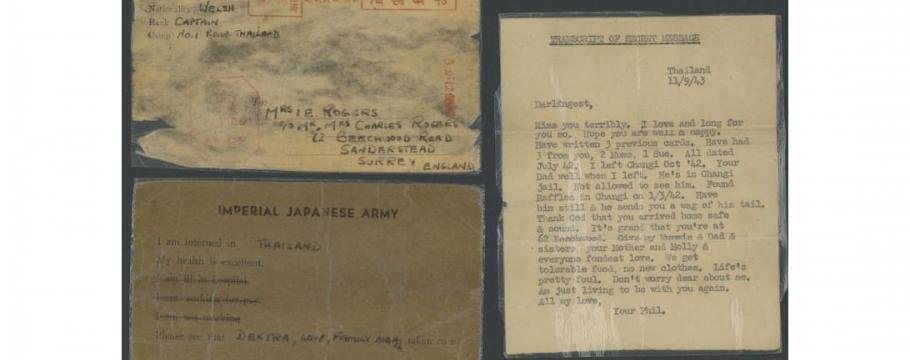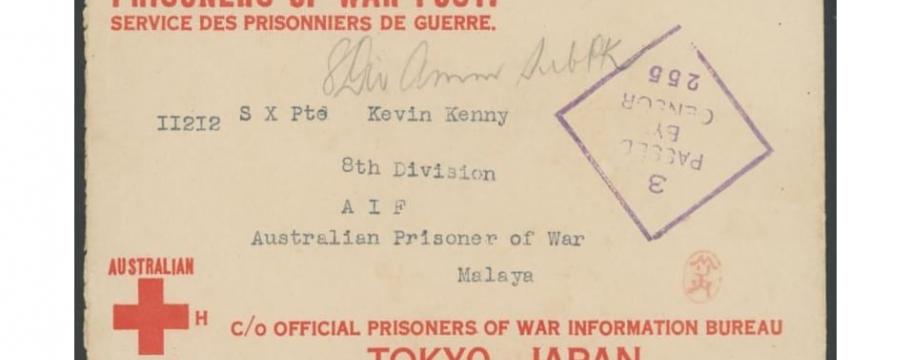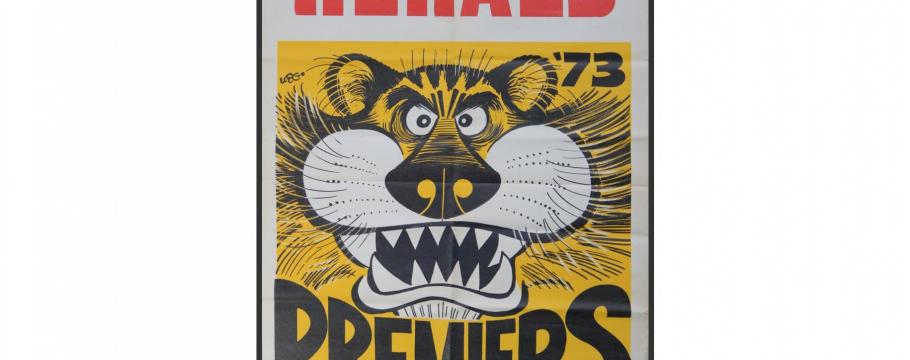







WWII prisoner-of-war letters auction a vital historic record
Author: Richard Brewster | Posted: 19th August, 2024
The phrase “necessity is the mother of invention” was never more apt than during World War II when a British army captain captured by the Japanese and interned at a prisoner-of-war camp in Thailand sent a secret message cleverly squeezed between two layers of a postcard to his wife back home.
On September 9, 1943, Captain Phil Rogers inscribed a 133-word message in micro-writing on tissue paper, which he then secreted between the postcard layers, alerting his wife to his fate.
This unique item (lot 1525) is part of New Zealander Lindsay Chitty’s 280-lot collection of World War II Japanese occupation prisoner-of-war and internee mail – a major highlight of Melbourne-based Abacus Auctions forthcoming four-day sale of stamps, postal history and picture postcards, militaria, coins and banknotes, sporting memorabilia and other collectables from 11am Tuesday August 27 to Friday August 30 at 29 Hardner Road, Mount Waverley.
Originally amassed by Englishman Graham Reynolds, a significant contributor to David
Tett’s six-volume magnum opus on the subject, the Chitty collection is an internationally and historically important record of Japan’s brutal treatment of prisoners of war during their occupation of East Asia.
While the inhumane treatment of British and Allied prisoners on the Burma-Thailand Death Railway and Sandakan Death marches of North Borneo are well documented in books and films, this collection also highlights a second death railway across the Sumatran mountains (lot 1429 is a good example) and the widespread use of POWs and internees as slave labour throughout the region.
Perhaps the most infamous of the prisoner-of-war camps is Singapore’s Changi in which almost 15,000 Australian captured at the country’s fall in 1942 were imprisoned.
Several letters either to or from the camp are featured in the collection including a 1942 Australian Red Cross POW envelope with ‘c/o OFFICIAL PRISONERS OF WAR INFORMATION BUREAU’ at the base (lot 1376). The Japanese objected to this so all later correspondence from Red Cross had the text either amended or obliterated.
One of the civilian internees was American writer Agnes Keith who, with her British employee husband and their young son, spent more than three years as “guests” of the Japanese.
Keith detailed this time in her first-hand account “Three Came Home” that included a graphic description of the appalling daily conditions under which they lived.
Several items of mail the family received during their internment are featured among the collection.
The auction’s sporting memorabilia section contains a memorial to 19th century English all-round cricketer, the immortal W.G. Grace, in the form of a cabinet card photograph of him batting (lot 3693) with a hand-written caption that states “I made 1000 in May with the bat in Photo in 1895 in first class cricket”.
At the time he was 46 years old and continued playing first class cricket (including 22 Tests) until 1908, by which stage he had reached 60 and scored more than 54,000 runs while taking 2809 wickets.
Legend has it that, during an appearance at a charity match, Grace was bowled first ball and then just stood there. When the umpire asked what he was doing, he replied “They have come to watch me bat. So, let’s just continue, shall we.”
The match-worn Victorian Football League jumper owned by 1985 Essendon premiership player Tony Elshaug (lot 3777) is another attraction. A former Melbourne player, Elshaug played 65 games for Essendon from 1984-87 before moving to Collingwood and then captain-coaching VFA side Dandenong to a premiership during 1990-91.





